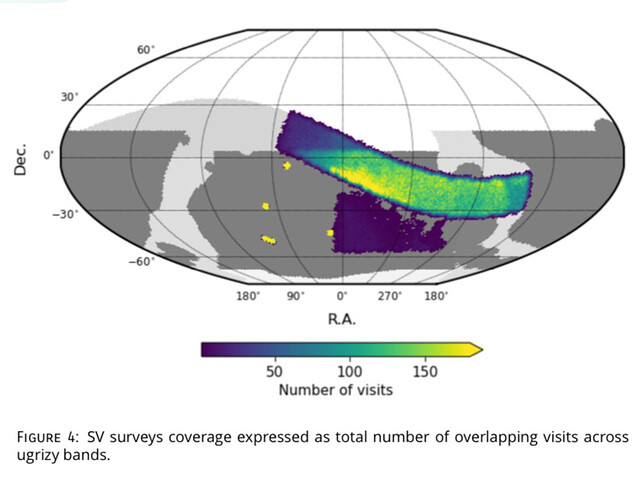Week 12 of the on-sky commissioning campaign with LSSTCam. The team has transitioned to sustained wide-area survey-mode observations, running the Science Validation surveys with the Feature Based Scheduler (FBS) for nearly full nights all this week. The team continues to accumulate experience during this full rehearsal of operational procedures, and to streamline operational workflows.
New highlights this week:
- During the month of July, excluding one night of closed dome testing due to high winds, an average of >570 science program visits have been acquired per night. The current single-night record is >750 science program visits, comparable to steady-state LSST operations.
- Sustained survey-mode observations have enabled preliminary trending analyses and comparisons to independent measures of the atmosphere contribution to the delivered image quality, including with the permanent DIMM located on Calibration Hill beside the Auxiliary Telescope (AuxTel). The team has also begun testing with a portable DIMM located inside the Simonyi Survey Telescope dome. While the delivered image quality has varied between nights, within a given night, and across the focal plane for individual visits, the Observatory has achieved a few near-contiguous hours of sub-arcsecond delivered image quality across the full focal plane in wide-area survey-mode observations. The team continues analyses of the Active Optics System (AOS) performance, thermal controls, and dome environment to improve the consistency of delivered image quality.
- AuxTel has begun routine survey-mode operations in parallel with observations on the Simonyi Survey Telescope.
- The FBS is now receiving cloud maps from the DREAM instrument, allowing for the option to consider variable atmosphere transparency across the sky when selecting targets.
- Using a simulated Target of Opportunity (ToO) event, the team successfully tested some aspects of the response that is planned for operations.
- Sequencer updates for LSSTCam were deployed that reoptimize focal plane performance, based on on-sky operating experience. Calibrations data products will be updated accordingly.
- The currently loaded filter set is grizy with a filter swap of y for u planned for next week.

